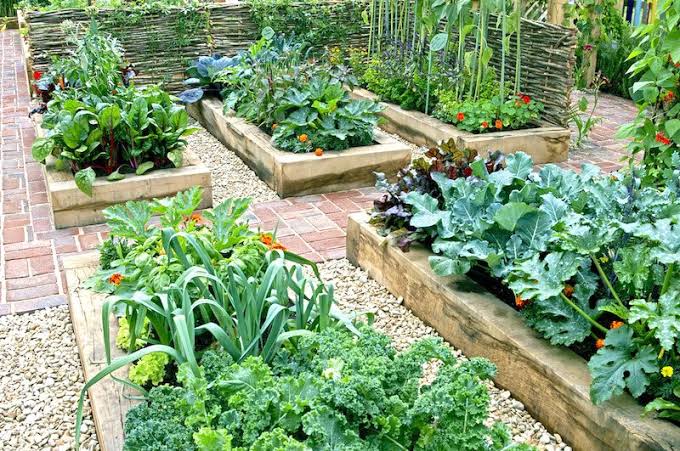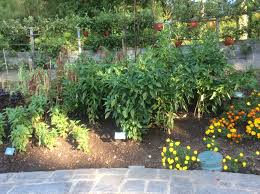Using Companion Planting can make your garden healthier and more productive. This gardening method involves planting different types of plants together to benefit each other. It’s like creating a plant community where they help each other grow and stay healthy.
When you Use Companion Planting, you are essentially creating a natural support system for your plants. Some plants have special abilities that can protect others from pests or enhance their growth. For example, planting basil near tomatoes can help keep away harmful insects. It’s like having a plant bodyguard that keeps your vegetables safe.
One of the great things about Using Companion Planting is that it reduces the need for harmful chemicals. Instead of relying on pesticides, you can use the power of nature to control pests. For instance, marigolds can deter nematodes, tiny worms that harm plant roots. So, planting marigolds with other crops can act as a natural pest control strategy.
Companion Planting also helps with nutrient management. Some plants have deep roots that can bring up nutrients from the soil, making them accessible to nearby plants with shallower roots. This creates a balanced ecosystem in your garden, ensuring that each plant gets the nutrients it needs to thrive.
Another benefit of Using Companion Planting is that it maximizes space in your garden. By carefully selecting plant combinations, you can make the most of your available space. For instance, tall plants like corn can provide shade for shorter plants like lettuce, creating a harmonious environment where both can flourish.
It’s like arranging a plant orchestra where each member plays a unique role, contributing to the overall symphony of your garden. The concept of Using Companion Planting is not just about growing plants side by side; it’s about understanding the relationships between different species and harnessing those connections for the greater good of your garden.
However, Using Companion Planting is a smart and sustainable way to cultivate your garden. It’s a natural approach that encourages a diverse and harmonious plant community. By strategically placing plants with complementary characteristics, you can enhance growth, deter pests, and create a thriving ecosystem. So, consider the power of companionship in your garden and let your plants support each other in their quest for health and productivity.
Read Also: 9 Rare Interesting Facts About King Cobras
How to Use Companion Planting

To Use Companion Planting, start by understanding the characteristics of different plants and how they can benefit each other. Choose plant combinations that work well together, creating a balanced ecosystem in your garden. For example, plant herbs like basil or mint near tomatoes to help repel pests.
Consider the growth habits of plants when planning your garden. Tall plants can provide shade for shorter ones, optimizing space and creating a harmonious environment. Think of it as arranging a plant community where each member plays a unique role.
Pay attention to plants’ nutrient needs. Some plants can enhance soil fertility by bringing up nutrients from deeper layers, benefiting neighboring plants with shallower roots. This natural nutrient management contributes to a healthier garden.
Be mindful of plants that have natural pest-repelling properties. Marigolds, for instance, can deter harmful nematodes. Integrate such plants strategically to reduce the need for chemical pesticides and create a more sustainable garden.
Rotate your crops and experiment with different plant combinations to find what works best for your garden. Companion Planting is not a one-size-fits-all approach, so observe how your plants interact and adjust your arrangements accordingly.
In essence, Using Companion Planting involves thoughtful planning and observation, allowing your plants to support each other in a symbiotic relationship. By harnessing the natural connections between different species, you can promote a thriving and productive garden.
Read Also: Boa Constrictors: Facts, Habitat, Reproduction & More
Techniques Used in Companion Planting

Using Companion Planting involves several techniques to optimize the benefits of plant interactions in your garden.
1. Polyculture Planting: Instead of growing a single type of plant in large monocultures, mix different plants together. This diversity helps in pest control and nutrient management.
2. Plant Guilds: Create plant guilds by combining a central plant with others that complement it. For example, planting a fruit tree as the central element and surrounding it with nitrogen-fixing plants, ground covers, and pest-repelling herbs.
3. Succession Planting: Plan the timing of your plantings to ensure a continuous harvest and to maximize space utilization. Once one crop is harvested, promptly replace it with another compatible one.
4. Trap Cropping: Use sacrificial plants to attract pests away from your main crops. This can protect your primary plants by keeping pests focused on the trap crops.
5. Complementary Root Structures: Pair plants with different root depths to maximize nutrient uptake. Deep-rooted plants can bring up nutrients from lower soil layers, benefiting shallow-rooted neighbors.
6. Companion Planting Charts: Refer to companion planting charts that outline which plants thrive together and which ones may inhibit each other’s growth. These charts serve as useful guidelines for planning your garden layout.
7. Observation and Adaptation: Regularly observe your garden and make adjustments based on the performance of different plant combinations. Not all plants will interact positively, so be prepared to adapt your approach.
By employing these techniques, you can enhance the health and productivity of your garden through Companion Planting, creating a more resilient and sustainable growing environment.
Advantages of Using Companion Planting

Using Companion Planting in your garden offers several advantages:
1. Natural Pest Control: Certain plants can repel or attract specific insects, reducing the need for chemical pesticides. For example, planting marigolds can deter nematodes, and basil can help protect tomatoes from pests.
2. Improved Soil Health: Companion plants with different root structures can enhance soil fertility. Some plants draw up nutrients from deeper layers, making them available to shallower-rooted plants. This creates a balanced and nutrient-rich soil environment.
3. Space Optimization: Strategic plant combinations, such as planting tall crops next to shorter ones, optimize space in your garden. This allows you to grow more in a limited area and creates a harmonious arrangement where plants support each other.
4. Reduced Dependency on Chemicals: Companion Planting can help minimize the use of synthetic fertilizers and pesticides. By relying on natural plant interactions, you contribute to a more environmentally friendly and sustainable gardening approach.
5. Biodiversity Promotion: Growing a variety of plants in close proximity fosters biodiversity in your garden. This diversity attracts beneficial insects, pollinators, and other organisms, creating a more resilient and ecologically balanced ecosystem.
6. Enhanced Crop Yield and Quality: The mutualistic relationships between companion plants can lead to increased crop yields and improved overall plant health. This is especially beneficial for home gardeners looking to maximize their harvest.
7. Weed Suppression: Some companion plants act as natural ground covers, suppressing weed growth and reducing competition for nutrients and water. This can save time and effort in weed management.
8. Resilience to Environmental Stresses: Companion Planting can enhance the resilience of your garden to environmental stresses such as drought or extreme temperatures. The diversity of plants can provide some level of protection and support during challenging conditions.
Incorporating Companion Planting into your gardening practices offers a holistic and sustainable approach that promotes a thriving, balanced, and productive garden.
Read Also: Waste Recycling Business Ideas

